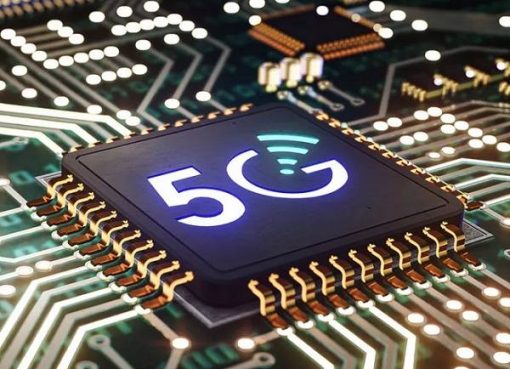Since topological insulators were first created in 2007, these novel materials, which are insulating on the inside and conductive on the outside, have intrigued researchers for their potential in electronics. However, a related but more obscure class of materials—topological photonics—may reach practical applications first.
Topology is the branch of mathematics that investigates what aspects of shapes withstand deformation. For example, an object shaped like a ring may deform into the shape of a mug, with the ring’s hole forming the hole in the cup’s handle, but cannot deform into a shape without a hole.
Using insights from topology, researchers developed topological insulators. Electrons traveling along the edges or surfaces of these materials strongly resist any disturbances that might hinder their flow, much as the hole in a deforming ring would resist any change.
Recently, scientists have designed photonic topological insulators in which light is similarly “topologically protected.” These materials possess regular variations in their structures that lead specific wavelengths of light to flow along their exterior without scattering or losses, even around corners and imperfections.
Here are three promising potential uses for topological photonics.
 The electrically-driven topological laser shown in this scanning electron microscopy image operates at terahertz frequencies.
The electrically-driven topological laser shown in this scanning electron microscopy image operates at terahertz frequencies.TOPOLOGICAL LASERS Among the first practical applications of these novel materials may be lasers that incorporate topological protection. For example, Mercedeh Khajavikhan of the University of Southern California and her colleagues developed topological lasers that were more efficient and proved more robust against defects than conventional devices.
The first topological lasers each required an external laser to excite them to work, limiting practical use. However, scientists in Singapore and England recently developed an electrically driven topological laser.
The researchers started with a wafer made of gallium arsenide and aluminum gallium arsenide layers sandwiched together. When electrically charged, the wafer emitted bright light.
The scientists drilled a lattice of holes into the wafer. Each hole resembled an equilateral triangle with its corners snipped off. The lattice was surrounded by holes of the same shape oriented the opposite way.
The topologically protected light from the wafer flowed along the interface between the different sets of holes, and emerged from nearby channels as laser beams. The device proved robust against defects, says electrical and optical engineer Qi Jie Wang at Nanyang Technological University in Singapore.
The laser works in terahertz frequencies, which are useful for imaging and security screening. Khajavikhan and her colleagues are now working to develop ones that work at near-infrared wavelengths, possibly for telecommunications, imaging, and lidar.

PHOTONIC CHIPS By using photons instead of electrons, photonic chips promise to process data more quickly than conventional electronics can, potentially supporting high-capacity data routing for 5G or even 6G networks. Photonic topological insulators could prove especially valuable for photonic chips, guiding light around defects.
However, topological protection works only on the outsides of materials, meaning the interiors of photonic topological insulators are effectively wasted space, greatly limiting how compact such devices can get.
To address this problem, optical engineer Liang Feng at the University of Pennsylvania and his colleagues developed a photonic topological insulator with edges they could reconfigure so the entire device could shuttle data. They built a photonic chip 250 micrometers wide and etched it with oval rings. By pumping the chip with an external laser, they could alter the optical properties of individual rings, such that “we could get the light to go anywhere we wanted in the chip,” Feng says—from any input port to any output port, or even multiple outputs at once.
All in all, the chip hosted hundreds of times as many ports as seen in current state-of-the-art photonic routers and switches. Instead of requiring an off-chip laser to reconfigure the chip, the researchers are now developing an integrated way to perform that task.

QUANTUM CIRCUITRY Quantum computers based on qubits are theoretically extraordinarily powerful. But qubits based on superconducting circuits and trapped ions are susceptible to electromagnetic interference, making it difficult to scale up to useful machines. Qubits based on photons could avoid such problems.
Quantum computers work only if their qubits are “entangled,” or linked together to work as one. Entanglement is very fragile—researchers hope topological protection could defend photonic qubits from scattering and other disruptions that can occur when photons run across inevitable fabrication errors.
Photonic scientist Andrea Blanco-Redondo, now head of silicon photonics at Nokia Bell Labs, and her colleagues made lattices of silicon nanowires, each 450 nanometers wide, and lined them up in parallel. Occasionally a nanowire in the lattice was separated from the others by two thick gaps. This generated two different topologies within the lattice and entangled photons traveling down the border between these topologies were topologically protected, even when the researchers added imperfections to the lattices. The hope is that such topological protection could help quantum computers based on light scale up to solve problems far beyond the capabilities of mainstream computers.
Source: Spectrum










